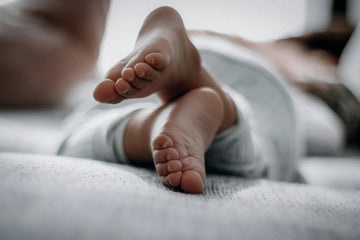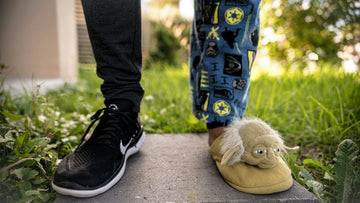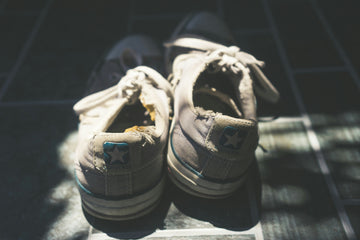The Science of Growing Pains: What’s Really Happening in Your Child’s Feet and Legs
by Jennifer O'Dell on Oct 14, 2025

📷Photo by Nattalia Nuñez
If your child has ever woken you up at night with sore legs or feet, you know how unsettling it can be. Many parents hear the phrase “growing pains”—but what does that actually mean? Are bones really “hurting” as they grow, or is something else going on?
The truth is, doctors and researchers have been studying growing pains for decades, and while we still don’t have all the answers, the research does give us a clearer picture of what’s really happening. In this post, we’ll share what science says about growing pains, what parents should watch for, and safe, simple things you can do to help your child feel more comfortable.
What We Know About Growing Pains
1. It’s not really about “bones stretching”
Despite the name, growing pains aren’t caused by bones physically growing. Bones grow silently. Instead, studies show that kids with growing pains don’t actually grow faster than other children their age [1].
2. The pain shows up at night
Parents often notice that kids are fine all day, but the pain hits in the evening or overnight. Research shows this is the most common pattern—children may wake up crying or complaining of aching legs or feet even though they were running around happily earlier [2].
3. It’s most often in both legs, not just one
Most children describe aching in both legs—especially in the calves, thighs, or behind the knees. Doctors often look for this “both sides” pattern when considering growing pains [3].
4. Some kids may be more sensitive to pain
Some studies suggest that children with growing pains have lower pain thresholds, meaning their bodies may simply feel muscle or joint stress more intensely than other kids [4].
5. Family history matters
Growing pains sometimes run in families, suggesting there may be a genetic component. If you experienced leg aches as a child, your kids may be more likely to as well [5].
What Parents Can Do at Home
The good news is that growing pains are benign—they don’t cause long-term damage and most kids outgrow them by their teen years [6]. In the meantime, here are some safe, parent-approved ways to ease the discomfort:
-
Gentle massage or stretching before bed to relax tired muscles.
-
Warm baths or heating pads to soothe nighttime soreness.
-
Supportive footwear and insoles during the day, which may help reduce strain on the legs and feet (not a cure, but can provide comfort).
-
Reassurance—remind your child that this is common and nothing is “wrong” with their body.
⚠️ Important: If the pain is only on one side, lasts into the morning, or is accompanied by swelling, fever, or limping, you should contact your pediatrician to rule out other conditions.
The Bottom Line
Growing pains are one of childhood’s little mysteries. While the exact cause is still unknown, research points to a mix of factors like muscle fatigue, pain sensitivity, and family history—not bones stretching. For most kids, the aches pass with time, and supportive strategies at home can make a big difference.
At KidSole, we’re here to help parents keep kids active, supported, and comfortable—because every step matters in their growth journey.
Looking for everyday support for your child’s feet?
Explore KidSole’s line of orthotic insoles made just for kids. They’re designed to cushion and support growing feet during play, sports, and school.
👉 Shop KidSole Insoles for Active Kids
References
-
Oster J, Nielsen A. Growing pains: a clinical investigation of a school population. Acta Paediatr Scand. 1972.
-
Lurie Children’s Hospital. Growing Pains: Parent Guide.
-
Evans AM, Scutter SD. Prevalence of “growing pains” in young children. J Pediatr. 2004.
-
Hashkes PJ et al. Children with growing pains have normal bone density but lower pain threshold. J Rheumatol. 2004.
-
Champion D et al. Twin family study of growing pains in South Australia. Twin Res Hum Genet. 2012.
-
Oberklaid F et al. “Growing pains”: clinical and behavioral correlates in a community sample. Pediatrics. 1997.



